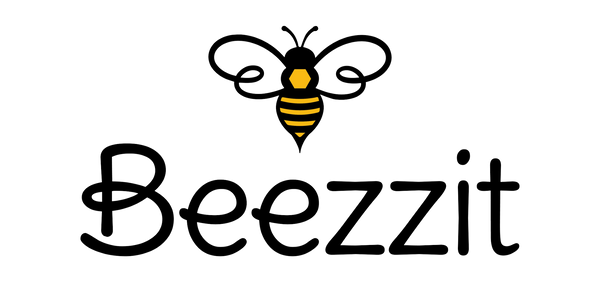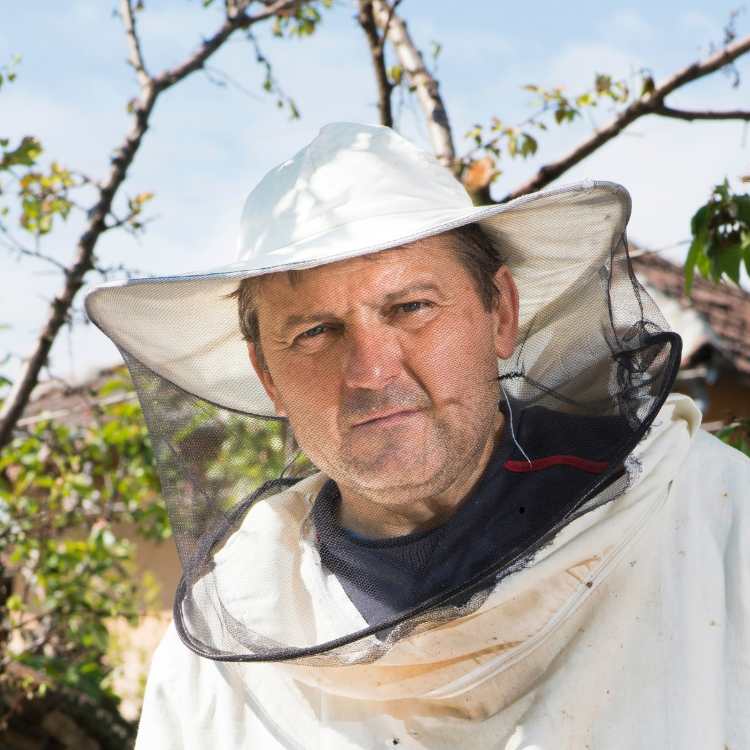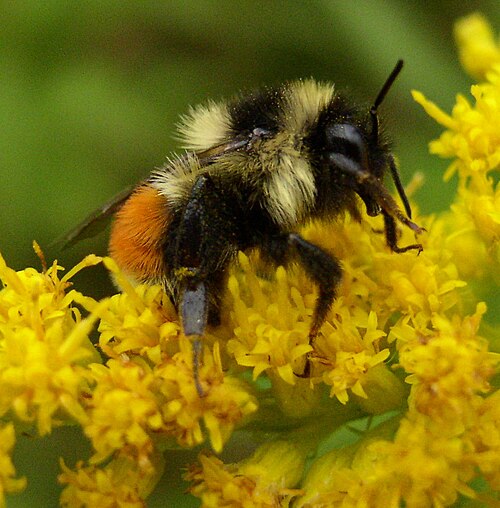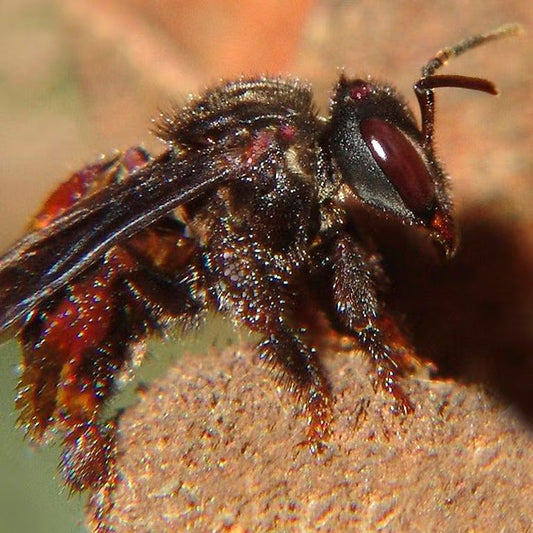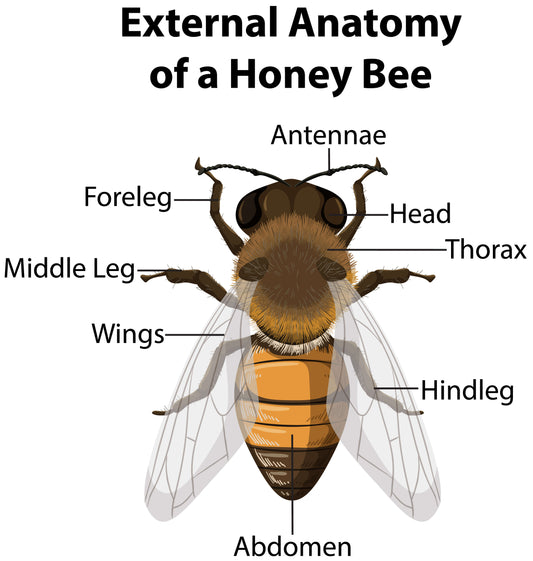Bumblebees brighten up gardens and meadows. These fuzzy creatures glide over flowers, collect nectar and have been an iconic part of the bee culture. But there are a few species that stand out among them. One of them is the orange bees. More specifically, the Bombus ternarius, these insects are also referred to as the tricolored bumblebees. This is because of their iconic black, yellow, and orange bands. These vibrant markings are not only a visual distinction but also work as a fascinating adaptation to the colder northern climates.
Distribution and habitat
Geographically, orange bees are most commonly spread across the northern US and throughout Canada. They live in temperate zones but can also be spotted as far west as Montana and Wyoming and in states like Pennsylvania, New York, and Maine.
What sets them apart is their ability to regulate body temperature in cooler regions (more on that later).
Thermoregulation in cold climates
In order to warm themselves midflight, orange bees shiver their thoracic muscles until their internal temperature rises over 30 °C. This adaptation allows them to forage early in the season when temperatures remain low and nectar resources are limited.

Physical traits and identification
The appearance of orange bees makes them super easy to spot from their relatives. Their abdomen has got the iconic bold yellow and black stripes, interrupted by a vivid orange band.
The coloration patterns differ slightly between queens, workers, and drones, but the orange stripe remains consistent.Key identification features of an orange bee
- Workers measure between 8 to 13 mm in length.
- Queens grow larger. They can reach 17 to 19 mm.
- Drones have longer hair and yellow heads.
- All castes show a characteristic orange band across the abdomen.

Orange bee on ground
Nesting and colony structure
Like many bumblebees, orange bees prefer to make underground nests. They often occupy abandoned burrows dug by rodents, reinforcing the cavity with wax and waterproof linings produced by the queen. Colonies are relatively small when compared to the honeybee. Colony strength will rarely exceed 200 individuals.
- Queen: Establishes the nest, lays eggs, and incubates them.
- Workers: Collect nectar and pollen, feed larvae, and maintain the nest.
- Drones: Mate with new queens later in the season.
Foraging and diet
Orange bees are generalist pollinators. They will visit a wide range of plants, from milkweed and goldenrod to berry bushes such as blueberries, raspberries, and cranberries. Their short tongues limit them to flowers with shallow nectar reserves. But thanks to their high adaptability, they are able to play a significant role in northern ecosystems.
Orange bee larvae are fed a blend of nectar, pollen, and small amounts of honey stored in wax pots inside the nest. And orange bees do produce honey. However, it is not in bulk. Rather they produce just enough to sustain larvae rather than stockpile for winter.

Orange bee foraging
Pollination role of orange bees
Every visit a orange bee makes to a flower contributes to pollination. Their hairy bodies are able to trap pollen grains, which then transfer to the next bloom they land on. Unlike specialized pollinators, they spread their activity across multiple plant species. This makes them super vital for maintaining biodiversity.
Ecological contributions
- Pollinate berry crops critical to agriculture
- Maintain genetic diversity among wildflowers
- Support ecosystems that depend on cross pollination for renewal
Through these actions, orange bees sustain both wild habitats and human food systems.
Reproduction and lifecycle
The life cycle of orange bees follows a yearly pattern. In the early spring, a mated queen will come out of its hibernation, start collecting nectar, and lay eggs. The eggs grow into the first workers of the season, who then take over all foraging and nesting chores. By mid-summer, the queen will be producing drones and new queens. At the end of the cycle, the old queen and workers die, and only the newly mated queens will survive to overwinter in soils or leaf litter, to repeat the cycle in the spring.
Sting behavior
As with many bumblebees, orange bees are not aggressive. The queens and workers can sting, but they only do this if their nest is under direct attack. Drones do not have any sting at all. Their calm personality makes them safe companions in gardens, where they will quietly pollinate plants.
My final thoughts on orange bees
As a beekeeper, I hold orange bees in high esteem. While honeybees are front and center, these bumblebees go about difficult jobs in the cold ecosystems while buzzing about meadows and berry patches nationwide. The next time you see one, stop and take a moment to think about the work of these wonderful pollinators of the north. Beekeepers and gardeners respect them in ways others might not recognize.
If you'd enjoy my fun blogging stories about bees. Check my full blog out here.
